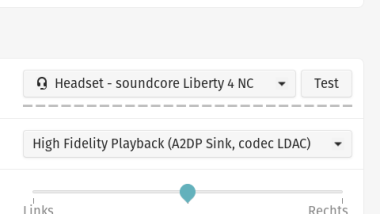thank you Linux for giving a damn about Bluetooth headphones
For context, LDAC is one of the few wireless audio codecs stamped Hi-Res by the Japan Audio Society and its encoder is open source since Android 8, so you can see just how long Windows is sleeping on this. I’m excited about the incoming next gen called LC3plus, my next pair is definitely gonna have that.
